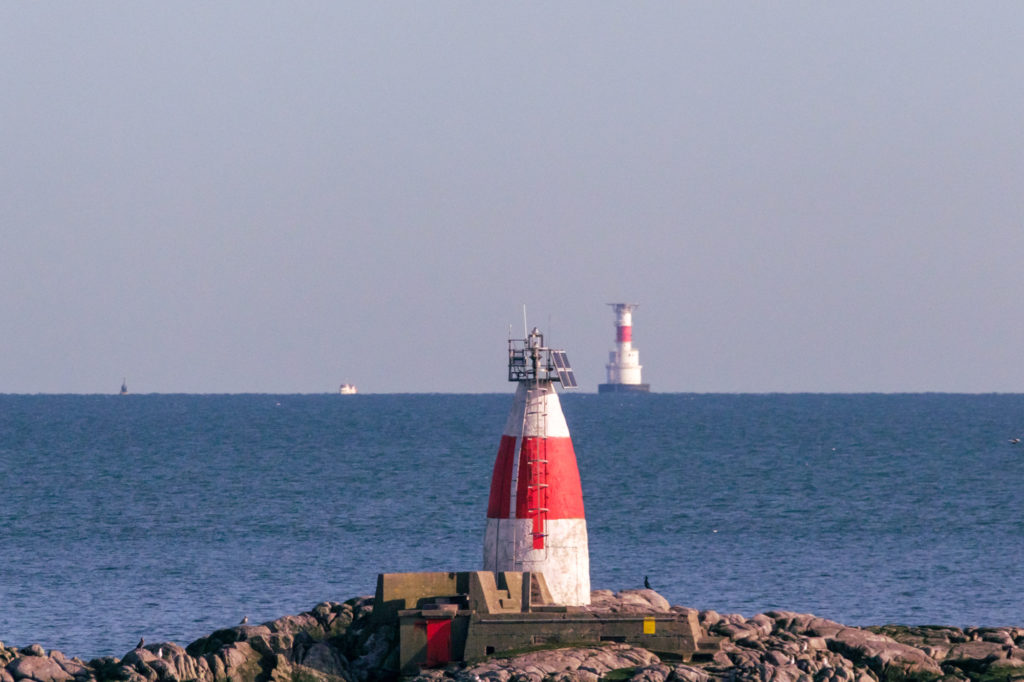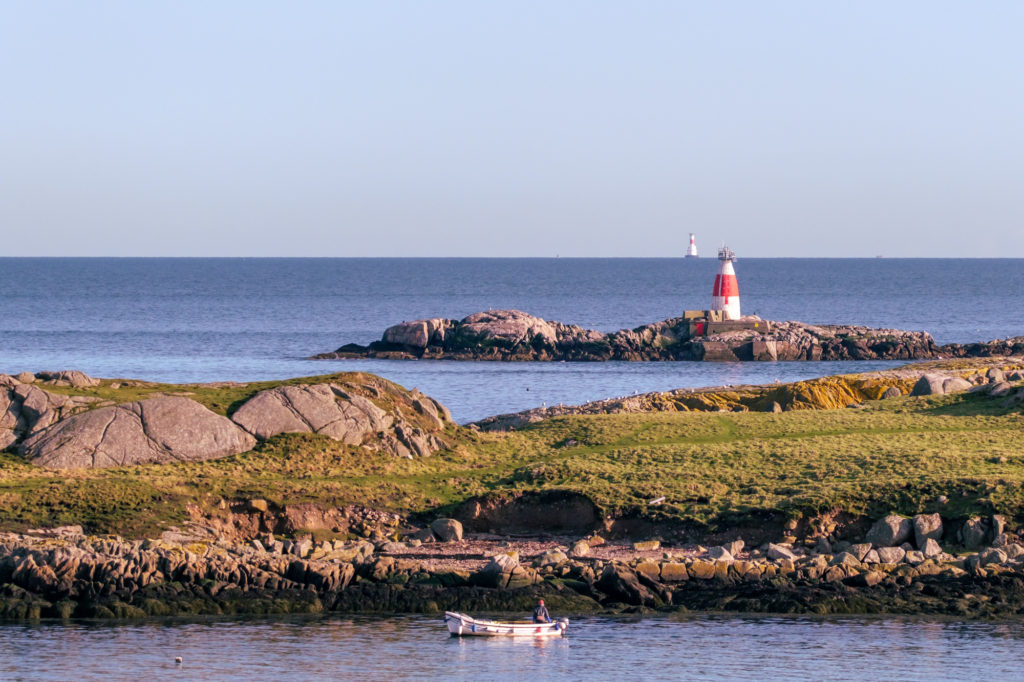Many say that the Irish coastline is about 3,200 km long. Others believe it to be perhaps 6,347 km. Or maybe it’s closer to 16,000 km. Distance perception was on my mind as I was photographing the Muglins and Kish Lighthouses yesterday because The Kish lighthouse always seems relatively near on a clear day.

13 km looks short at 843 mm
Fuji X-T4 | Sigma 150-600 F5-6.3 DG OS HSM | 843 mm | 1/10,000s | f/11 | ISO 2500 | handheld
I once had aspirations to kayak around the island of Ireland and then, a bit older, wiser, I thought I’d walk it. The distances for the two trips are quite different.
If you know anything about fractals, you’ll know that the step length is the important part of measuring the length of an edge. The Ordnance Survey of Ireland estimated the coastal length as 3171 km and studies in 2013 concluded that the OSI used a step length of 1 km. So the coast they measured was ‘smoothed’ with a 1 km filter. That’s more or less how you’d kayak it, point to point in straight lines.
The US Defence Agency came up with 6347 km when they used a much shorter step length. That’s been on Wikipedia and has become a commonly accepted value for the length of the Irish coastline. Leaving tidal ranges out of it, if you were to walk it at official sea level, it might take about 16 million steps of my one metre strides which makes for a 16000 km walk. But of course you can’t because the coastal terrain ranges from the drama of our steep seacliffs to the pleasures of sandy beaches, not to forget river estuaries and privately owned coastal lands.

13 km looks more believable at 225 mm
Fuji X-T4 | Sigma 150-600 F5-6.3 DG OS HSM | 225 mm | 1/3000s | f/7.1 | ISO 400 | handheld
Local Dalkey man Peter Lynch (UCD Professor of Meteorology) took 13 years to walk around the island, starting in Sandycove at Joyce’s Tower. He talked about it with Pat Kenny in 2010 after he published his book Rambling Round Ireland. He even carried a Burmese walking stick, as I learned listening to the podcast that’s still available as I type.
It’s 10 years this month since Irish Lights shut down the foghorns. I, for one, still miss them. I’m looking out over a fog shrouded Dublin bay as I type this and it’s silent, a silence made eerie because I’m thinking about the absence of the fog horns while looking at an absence of the normal sea view.
What I really miss about the foghorn is knowing whether or not there is fog. It’s not material to my day or my night but I grew up by the coast. The sound of the horn was as useful an indicator of the weather as a barometer, or the size of heavy rain clouds. Not precise but comforting measures in a ‘red sky at night, shepherds delight’ kind of way.
I can’t imagine a production of ‘Long Day’s Journey into Night’ without foghorns.
Eugene O’Neill used foghorns to portray the passage of time in his play about a day in the life of the Tyrone family. The horn was also symbol of their problems. I remember watching as my father responded to the televised family atmosphere as if he was at home as a child. The portrayal of family relationships complicated or mitigated by morphine and booze.
There was the added irony that the play was supposed to be locked-away for 25 years after his death but the family decided not to honour O’Neill’s wishes. The play won him a posthumous Pulitzer just a few years after he died.
I recall watching it on TV on a Sunday night in the 1970s. It was already a decade old version with Katharine Hepburn and Ralph Richardson. My father and I watched and he reminded me that his childhood bedroom overlooked the sea. His window was blown out and the shards shredded his bed when a rogue sea-mine detonated on bumping against the granite rocks on the shore below the house. It’s about the only positive experience he related from boarding school during wartime. He was unhurt only because it happened in school term.
Like O’Neill, foghorns were a winter’s metronome in his world, a comforting measure of time to accompany the hourly chimes of the grandfather clock in the hall.
As the play progresses, a play that was largely autobiographical, the foghorns create a dramatic atmosphere and the dysfunctional lives of the characters are jarred if not drugged by the weight of the fog.
In these parts, all you’d need is the acrid smoke of the coal fire to complete the picture, the smog of it mixed with tobacco smoke.
Come to think of it, the foghorns and coal fires and tobacco smoke are all gone. Maybe that’s a good thing after all.

Leave a Reply